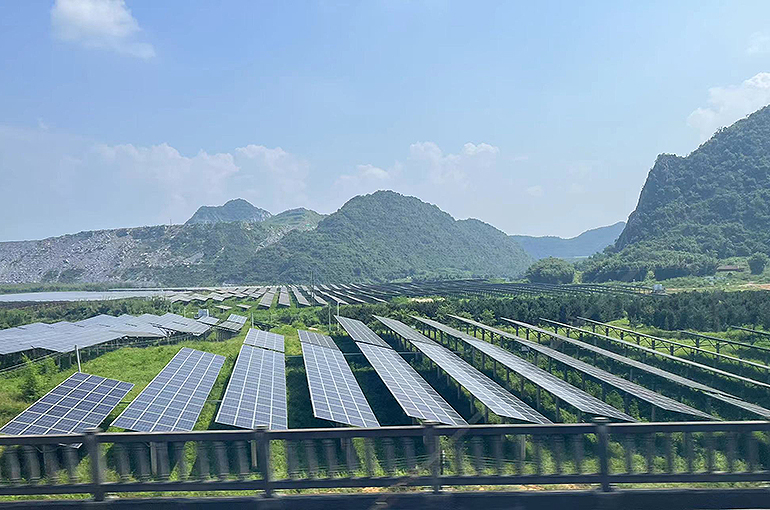 China Hikes Supervision on PV Stations' Occupation of Cropland
China Hikes Supervision on PV Stations' Occupation of Cropland(Yicai) Oct. 20 -- China has been tightening its supervision of photovoltaic power stations, particularly to ensure that none of them is built on cultivated cropland, since the beginning of the year.
A number of Chinese provinces, including Hebei, Shandong, Jiangsu, and Guangdong, have been comprehensively investigating PV stations to check whether they are on cultivated land.
China's Ministry of Natural Resources issued a notice in June last year to warn that cultivated and forest land should not be occupied to build PV stations. In April, the State Council issued the Notice on Supporting the Development of PV Industry and Standardizing Land Use Management, also known as Document No. 12, to further clarify that permanent basic farmland, basic grassland, and Grade I protected forest land shall not be occupied by PV power stations.
Wang Kang, an official at the natural resources bureau of a city in southern China, told Yicai that since the second half of the year, he has started reviewing the location of PV stations to ensure that they are not occupying cropland and permanent basic farmland and whether they need to be demolished or rectified.
A few months ago, a provincial department sent a satellite image of the city from last year, showing that some hundreds of mus, equal to tens of hectares, of permanent basic farmland was occupied by PV power stations, Wang said. The city has already demolished, relocated, reconstructed, and rectified some of them, he added.
Since the beginning of this year, several PV projects of central state-owned enterprises have published bidding announcements for the demolition of their PV stations for illegal land occupation. Some of the demolished stations had a power capacity of as much as 60,000 kilowatts, and others were still in construction.
At the same time, local governments have become more cautious about examining and approving new PV power stations.
"The projects that need to be reported to the counties, especially the large-scale ones, have to be reported to the provinces as well now," Wang said.
A number of PV companies also confirmed to Yicai that after the publication of Document No. 12, there are more and more relevant procedures and communication levels for the investment and construction of PV power stations.
"In the past, many local policies about how high PV panels needed to be installed to meet the lighting needs of the crops beneath were vague," said Yang Mingxun, deputy general manager of a PV power station investment firm. "As a result, the stations failed to meet the planting requirements, causing a lot of cultivated land to be wasted and idle.
"It's time to end the inefficient development model of the past," Yang noted.
China has striven to ensure its farmland area remains above the red line of 1.8 billion mus, or 120 million ha, since 2006. Last year, China's cultivated land area increased by about 1.3 million mu to 1.9 billion mu from the end of the previous year, achieving a net increase in the total cultivated land for two consecutive years, according to data from the Ministry of Natural Resources. The continuous decrease of the total cultivated land has been initially contained, the ministry added.
Editor: Futura Costaglione